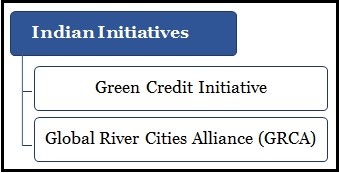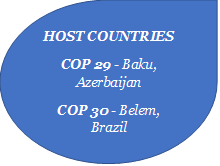The Conference of Parties (COP-28) has been recently concluded in Dubai, United Arab Emirates (UAE) with the adoption of UAE Consensus.
Click to know about Part 1 & Part 2

|
Green Credit Initiative |
|
|
Global River Cities Alliance (GRCA) |
|
Declaration on Climate and Health
December 3 was celebrated as World Health Day.
The Global Renewables and Energy Efficiency Pledge
China has the world’s largest installed renewable energy capacity followed by the United States, Brazil and India.
|
India’s Status on Renewable Energy |
|
Emirates Declaration on Resilient Food Systems, Sustainable Agriculture, and Climate Action
Global Cooling Pledge
Conventional cooling, such as air-conditioning is a major driver of climate change, responsible for over 7% of global GHG emissions.
India has its own Cooling Action Plan, announced in 2019 to reduce power consumption for cooling across sectors by 20-25% by 2038.
Fossil fuels are responsible for around 75% of all GHG emissions and about 90% of global CO2 emissions.
Methane is the most widespread greenhouse gas apart from CO2, accounting for nearly 25% of all emissions. It is also about 80 times more potent than CO2 in causing global warming.
To download full pdf, click here
